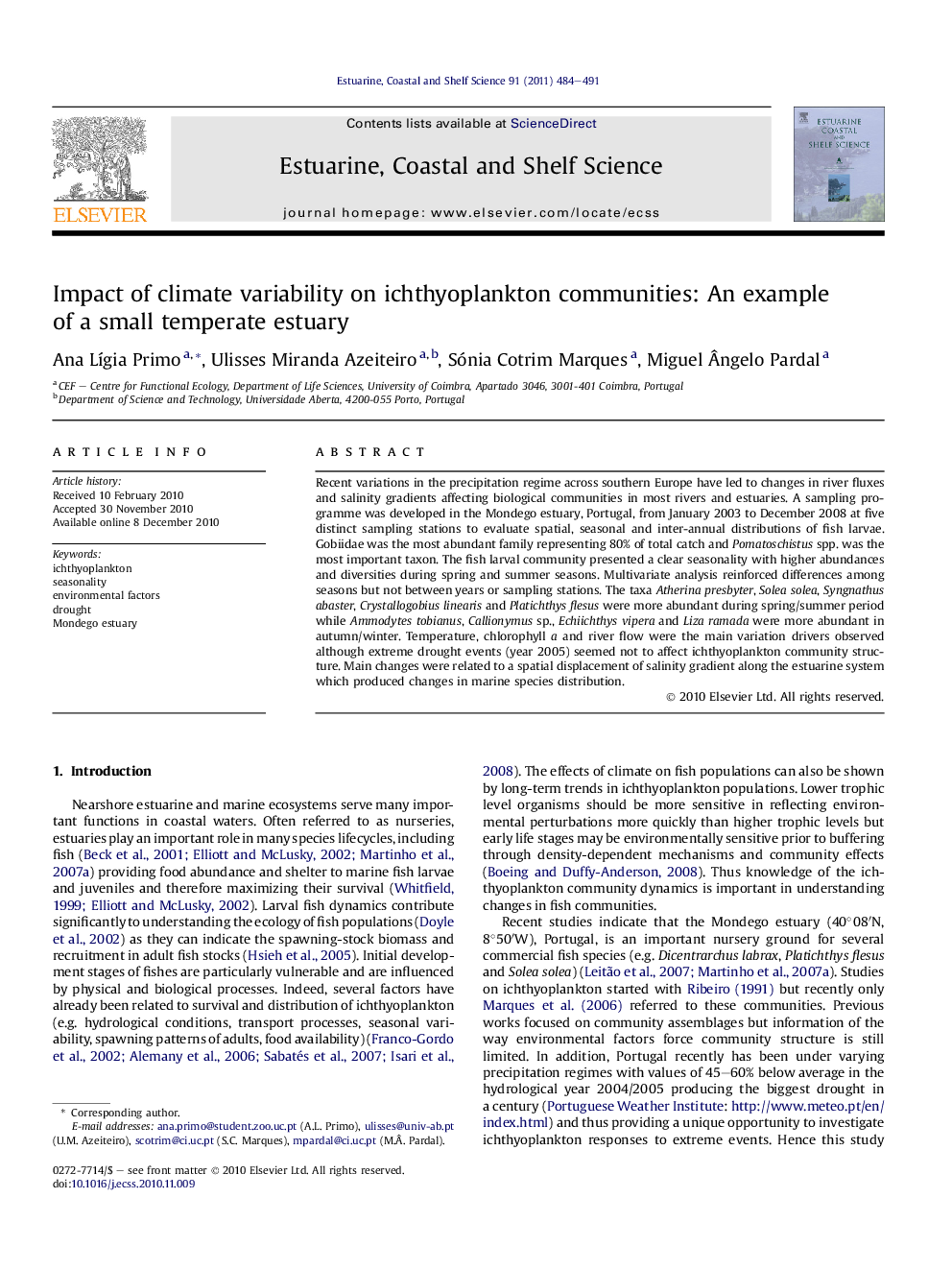| Article ID | Journal | Published Year | Pages | File Type |
|---|---|---|---|---|
| 4540468 | Estuarine, Coastal and Shelf Science | 2011 | 8 Pages |
Recent variations in the precipitation regime across southern Europe have led to changes in river fluxes and salinity gradients affecting biological communities in most rivers and estuaries. A sampling programme was developed in the Mondego estuary, Portugal, from January 2003 to December 2008 at five distinct sampling stations to evaluate spatial, seasonal and inter-annual distributions of fish larvae. Gobiidae was the most abundant family representing 80% of total catch and Pomatoschistus spp. was the most important taxon. The fish larval community presented a clear seasonality with higher abundances and diversities during spring and summer seasons. Multivariate analysis reinforced differences among seasons but not between years or sampling stations. The taxa Atherina presbyter, Solea solea, Syngnathus abaster, Crystallogobius linearis and Platichthys flesus were more abundant during spring/summer period while Ammodytes tobianus, Callionymus sp., Echiichthys vipera and Liza ramada were more abundant in autumn/winter. Temperature, chlorophyll a and river flow were the main variation drivers observed although extreme drought events (year 2005) seemed not to affect ichthyoplankton community structure. Main changes were related to a spatial displacement of salinity gradient along the estuarine system which produced changes in marine species distribution.
Research highlights► Mondego estuary ichthyoplankton community characterization. ► Effects of droughts on estuarine fish larvae communities. ► Dry events seemed not to affect fish larvae community structure in Mondego estuary. ► Changes in salinity gradients resulted in changes in marine species distribution.
